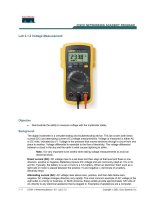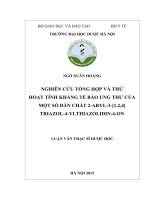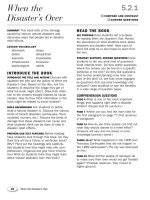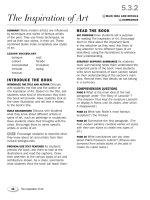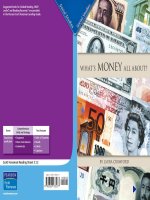3 1 2 whats money all about (social studies)
Bạn đang xem bản rút gọn của tài liệu. Xem và tải ngay bản đầy đủ của tài liệu tại đây (3.36 MB, 12 trang )
Suggested levels for Guided Reading, DRA,™
Lexile,® and Reading Recovery™ are provided
in the Pearson Scott Foresman Leveling Guide.
What’s
Genre
Expository
nonfiction
Comprehension
Skills and Strategy
• Sequence
• Draw Conclusions
• Summarize
money all about?
Text Features
•
•
•
•
Table of Contents
Heads
Labels
Captions
by Laura Crawford
Scott Foresman Reading Street 3.1.2
ISBN 0-328-13327-2
ì<(sk$m)=bd ch < +^-Ä-U-Ä-U
Reader Response
1. Describe the sequence for “silent trading.”
Use a graphic organizer to help you.
What’s
1
money all about?
2
3
4
5
by Laura Crawford
2. Summarize the kind of trading that
happened between the ancient Egyptians
and Lebanese.
3. Write a complete sentence using the
words bargaining and compromise. Check
the Glossary if you need help.
4. How does the picture on page 14 help you
understand how one type of early money
looked?
Editorial Offices: Glenview, Illinois • Parsippany, New Jersey • New York, New York
Sales Offices: Needham, Massachusetts • Duluth, Georgia • Glenview, Illinois
Coppell, Texas • Ontario, California • Mesa, Arizona
TABLE OF CONTENTS
CHAPTER 1
A World of Money
4
CHAPTER 2
Bartering
6
CHAPTER 3
Forms of Money
11
CHAPTER 4
Every effort has been made to secure permission and provide appropriate credit for
photographic material. The publisher deeply regrets any omission and pledges to
correct errors called to its attention in subsequent editions.
Money for the
United States
Now Try This
Glossary
15
18
20
Unless otherwise acknowledged, all photographs are the property of Scott Foresman,
a division of Pearson Education.
Photo locators denoted as follows: Top (T), Center (C), Bottom (B), Left (L), Right (R),
Background (Bkgd)
Opener: Getty Images; 1 ©DK Images; 4 ©DK Images; 5 Peter Arnold; 8 ©DK Images;
9 Peter Arnold; 10 ©DK Images; 11 Peter Arnold; 12 ©DK Images; 13 Corbis;
14 ©DK Images, Corbis; 15 Tom Stack and Associates, Inc.; 18 AP Wide World Photos
ISBN: 0-328-13327-2
Copyright © Pearson Education, Inc.
All Rights Reserved. Printed in the United States of America. This publication is
protected by Copyright, and permission should be obtained from the publisher
prior to any prohibited reproduction, storage in a retrieval system, or transmission
in any form by any means, electronic, mechanical, photocopying, recording, or
likewise. For information regarding permission(s), write to: Permissions Department,
Scott Foresman, 1900 East Lake Avenue, Glenview, Illinois 60025.
2 3 4 5 6 7 8 9 10 V0G1 14 13 12 11 10 09 08 07 06 05
3
Chapter 1 A World of Money
What did people do before there was
money? How were they paid for their work?
Before money, how did humans get what they
needed to survive?
Thousands of years ago, there was no such
thing as money. As time passed, people found
it was useful for doing business. Today, each
country has a form of money, or currency.
The currency of the United States is the dollar.
Mexico uses pesos. The English have used
pounds for hundreds of years, while most of
Europe now uses the euro. The currency in
China is the renminbi, and the yen is used in
Japan.
4
Stock exchange in Hong Kong, China
As you know, people use money to buy
goods and services. People also store their
money in banks. But did you know that every
day, different currencies are traded for one
another?
Imagine that you are going to leave the
United States to visit London, England. When
you arrive in London you will need English
money to buy food, ride on a bus, or visit a
museum. In London, or even before you leave
the United States, you can trade in United States
dollars for English pounds.
There’s much more that we could discuss
about modern currency. But let’s first rewind to
the start of human civilization. Let’s look at how
trading, buying, and selling used to work.
5
Chapter 2 Bartering
Long before there was modern money,
people had ways to get food and supplies. People
would grow, catch, or make most things. Then
they would barter, or trade, for things that they
couldn’t grow, catch, or make.
Some people focused on farming, growing
as much food as they could. Other people
concentrated on fishing or hunting, catching
as many fish and land animals as they could.
Others were skilled craftsmen. Through
bartering, many people were able to share the
crops raised by the farmers, the fish caught
by the fishermen, the animals caught by the
hunters, and the goods made by the craftsmen.
6
Bartering was not always easy. Often people
could not agree on the value of the items they
wanted to trade.
An argument might have arisen between
a fisherman and a hunter trying to barter with
each other. The fisherman may have thought
that one deer was worth five fish, and the
hunter may have thought the deer was worth
one hundred fish.
People often had to compromise, or give
up some of their demands, so an agreement
could be made. Think about the fisherman and
the hunter. To compromise, the fisherman may
have given the hunter sixty fish in exchange for
his deer.
When two people discuss, or sometimes
argue over, a price, it is called bargaining.
Both the fisherman and the hunter would have
wanted and needed as much food as possible.
They would have bargained until each felt the
trade was fair.
7
Bartering and bargaining took place all over
the world. In parts of coastal Africa, people
spoke many languages. Sometimes, two groups
of people wanted to barter but could not
communicate. So what did they do? They used
“silent trading” when dealing with each other.
Here’s how silent trading worked: Traveling
traders would call out, alerting local traders that
they had arrived and were ready to trade.
Egyptians trading goods
Outdoor market in Mali, Africa
Some of the earliest evidence of goods
being bartered are found in ancient Egyptian
paintings. Some of the paintings show people
exchanging bread for fish. They also show
wooden boxes being traded for shoes.
The Egyptians bartered with each other,
but they also bartered with other countries.
The Egyptians sent stones, copper, grain, and
papyrus to the people who lived in ancient
Lebanon. In exchange, the Egyptians received
wood such as fir, cedar, and pine. Through
bartering, both the Egyptians and the people of
ancient Lebanon got things that could not be
found in their home countries.
8
9
Chapter 3 Forms of Money
Bartering goods and services did not always
work, so people began using items as money.
One important form of early money was salt.
For thousands of years in Africa and Asia, salt
was used for money. That is where we get the
word “salary!” Salary means the amount of
money that a person is paid for work. There
were many reasons to use salt as money. It was
easy to measure and easy to carry. In some
ancient lands, salt was more precious than gold!
Silk cloth from China
The traveling traders would then leave
spices, jewels, minerals, precious stones, or
horses on a beach. They would wait for the
local people to come and look at the goods.
The local traders would then leave wood,
cloth, fine metalwork, glass, or dried fish on
the beach. Each group returned and decided if
the trade was fair. If either group didn’t like the
goods being offered, it would not take them.
The groups returned with different items until
everyone was satisfied. The entire trade was
done without any speaking. Sometimes the
traders never even saw each other!
10
Modern Ethiopian women
and children load a donkey
with bags of salt for trade.
11
Wampum belt
In North America, Native Americans used
wampum for trading and ceremonial purposes.
The Native Americans polished white and
purple shells. They strung the shells like beads
in patterns, making wampum belts or necklaces.
One black bead might be worth several white
beads, and one belt could contain as many as
360 beads. The wampum system worked well
for Native Americans when they were trading
with each other. However, it was difficult for
them to trade with people who thought that
wampum had little value.
12
It was hard for people to agree on the value
of things like salt and wampum. More people
worldwide were trading, or doing business,
with each other. They traded within their
communities and traveled to other countries to
trade. It was even harder to agree on how much
things were worth from country to country.
People established coin-based systems of
money. Coins were decided upon for a good
reason: They can be small and easy to carry!
Historians think that the first coins were used
about three thousand years ago, although they
are unsure of the exact date.
Ancient trade ship
13
In what is now the country of Turkey, coins
made of silver and gold were stamped with a
value. This idea spread to Europe and then to
other parts of the world. With the coin’s value
stamped on its surface, people could figure out
how much to charge for their goods.
Shekel from the Roman period
Chapter 4 Money for the United States
During colonial times, the colonies used
British pounds. This turned into a big problem
when the colonies became the United States
of America. The new country needed its own
money.
The answer to the problem was to create
a system of coin-based money that the entire
country could use. In 1792 Congress authorized
coins that all thirteen states could use for trade.
Our country’s earliest coins were small and
round, with thirteen interlocking rings around
the edges. One side of the coin said,
“WE ARE ONE,” while the
other said, “MIND YOUR
BUSINESS.”
Early American coin
14
15
Today our coins are made in four mints
located around the country. When you look at
a coin, you can see markings on it. If you see
the letter D on an American coin, it tells you
that the coin was minted, or made, at the mint
in Denver, Colorado. If you spot the letter P
on a coin, it means that the coin was minted in
Philadelphia, Pennsylvania. The other mints (in
San Francisco, California, and West Point, New
York) make coins for coin collectors. Therefore,
the coins that you use in the marketplace have
either a D or a P stamped on them.
Our dollar bills are printed at the Bureau
of Engraving and Printing in Washington, D.C.
They are printed on large sheets of paper made
with linen and cotton. Special ink is used to
create the images and writing on each bill.
American dollar bills are just one form of
modern currency. People all over the world
use money to get what they need. From salt to
coins, money keeps changing. Who knows what
we’ll use as money in the future!
Stacks of American one dollar bills lined up in a
machine at the Bureau of Printing and Engraving
in Washington, D.C.
16
17
Now Try This
The United States Mint
There are hundreds of resources available for
people who are interested in news about money.
However, when it comes to United States
currency, there is one source that you should
check first: the official Web site of the United
States Mint. Using a computer, type the words
“United States Mint” into a search engine. One
of the first Web addresses you will see will be
the official Web site of the United States Mint.
Once you are on the site, start exploring!
One of the first things you will notice is that the
Department of the Treasury oversees the United
States Mint. There are many more interesting
facts to be found at the United States Mint Web
site.
18
to Do It!
w
o
H
s
’
e
r
He
Get together in small groups and carefully
look over the contents of the United States Mint
Web site. Then assign each group member one
section of the site to research. When each group
member has finished researching, meet again to
share your information.
Here are some questions to help guide
you in doing your research and presenting
your information: What section of the site did
you research? What did you find out? What
more would you like to know about what you
researched? Did the Web site lead you to any
other Web sites? What questions were answered
by your research? Do you have more questions?
19
Reader Response
Glossary
bargaining n.
working together
to come up with
an agreement on a
price.
compromise v. to
give up some of your
original demands
in order to reach
an agreement with
someone.
currency n. any
kind of money used
as a medium of
exchange.
mints n. places
where money
is coined by the
government.
wampum n. beads
made from shells,
formerly used by
Native Americans
as money.
1. Describe the sequence for “silent trading.”
Use a graphic organizer to help you.
1
2
3
4
5
2. Summarize the kind of trading that
happened between the ancient Egyptians
and Lebanese.
3. Write a complete sentence using the
words bargaining and compromise. Check
the Glossary if you need help.
4. How does the picture on page 14 help you
understand how one type of early money
looked?
20

